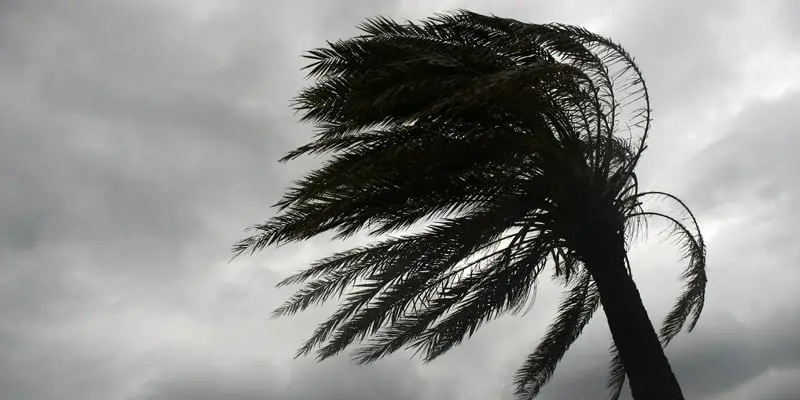[ssboost]
The Atlantic Hurricane season begins on June 1st and runs until November 30th. During that time, US weather watchers keep a close eye on what is happening in the Caribbean. The reason is simple: hurricanes from the Atlantic that move into the Caribbean often affect the Eastern United States. The U.S. National Weather Service closely watches these storms, and the people in the Caribbean region benefit from the attention.
The names of the hurricanes are chosen from six separate lists that are rotated. Names of storms that cause significant damages are removed from the pool of potential names. Taking cues from the past seasons from the 1980s through the 2000s, the region can typically expect up to six hurricanes.
Local weather offices in the Dominican Republic receive forecast information from a Doppler weather radar system located at the Punta Cana International Airport. US based storm chasers are given expedited clearance over Dominican Republic airspace.
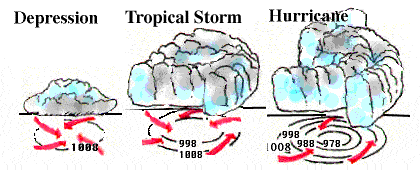 Hurricanes begin as tropical depressions and can exist for days and even weeks before they evolve into hurricanes. A storm receives a name once it reaches tropical storm status.
Hurricanes begin as tropical depressions and can exist for days and even weeks before they evolve into hurricanes. A storm receives a name once it reaches tropical storm status.
A tropical depression begins as a low pressure spinning thunderstorms and sustained winds up to (but no higher than) 39 miles an hour. A system becomes a tropical storm when more cyclonic circulation in the storm is present and more organized and the winds reach between 39 and 73 miles per hour.
Storms reach hurricane status when sustained winds reach above 73 miles per hour. Atlantic Basin Storms are classified on the Saffir-Simpson Hurricane Scale and fall between Category 1 and Category 5.
Hurricane Damage
According to the classification system, Category 1 storms cause damages that are classified as minimal with winds between 74 and 95 miles per hour. Moderate damage and winds between 96 and 110 miles per hour characterize Category 2 hurricanes. Damages continue to become more significant with Category 3 storms which can reach winds between 111 and 130 miles per hour. Category 3 hurricanes cause extensive damage. At the Category 4 level hurricanes leave extreme damage in their wake reaching winds from 131 and 155 miles per hour. Finally, Category 5 hurricanes top the scale in terms of high winds reaching 156 miles per hour and higher and creating catastrophic damage.

Devastating hurricanes are given a great deal of media coverage often giving an unreal understanding of the frequency of such storms. In fact, hurricanes in the Dominican Republic are not very common. In the past 80 years only 11 have hit the Dominican Republic. While hurricane season lasts from June 1 until November 30, September is the peak month for storms. The year 2003 was a rare exception with storms beginning in April and ending in December.
How Often Do They Hit DR?
Thankfully, most storms hit less populated areas on the western and southwestern coasts of the country. Large storms are rare. In fact, the capital city Santo Domingo has been directly hit by just three storms since 1930. That year in September a Category 4 or 5 storm Hurricane San Zenon hit. It took another nearly 50 years for another storm to hit the city; Hurricane David, Category 4, hit in 1979. The last time a hurricane to hit Santo Domingo was in September 1998 when Georges, a Category 3, pounded the city.
Despite the rarity of storms, most areas in the Dominican Republic have seen storms at some point. Hotels and businesses are well-versed in hurricane preparedness. By the slim chance tourists happen to be caught in a hurricane in the Dominican Republic, most managers and hotel staff will provide adequate instructions. Facilities have plans in place. In the past the worst problems faced by travelers during a hurricane came from downed telephone lines, leaving tourists without the ability to reach the mainland until lines were repaired.
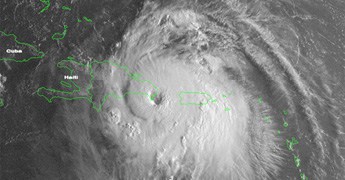 In the hurricane season of 1998, places along the east and southeast parts of the country found themselves without telephone service as Hurricane Georges pounded the region. The telecommunications issues caused widespread changes in the region. Since then, telephone companies have fixed the problem by installing telephone lines below ground.
In the hurricane season of 1998, places along the east and southeast parts of the country found themselves without telephone service as Hurricane Georges pounded the region. The telecommunications issues caused widespread changes in the region. Since then, telephone companies have fixed the problem by installing telephone lines below ground.
Lines were buried as far back as 1979 in Santo Domingo in the aftermath of David. Since 1998 hotels also have on hand satellite phones so that communication with the outside world is virtually guaranteed.
Storm Likely Tracks by Month
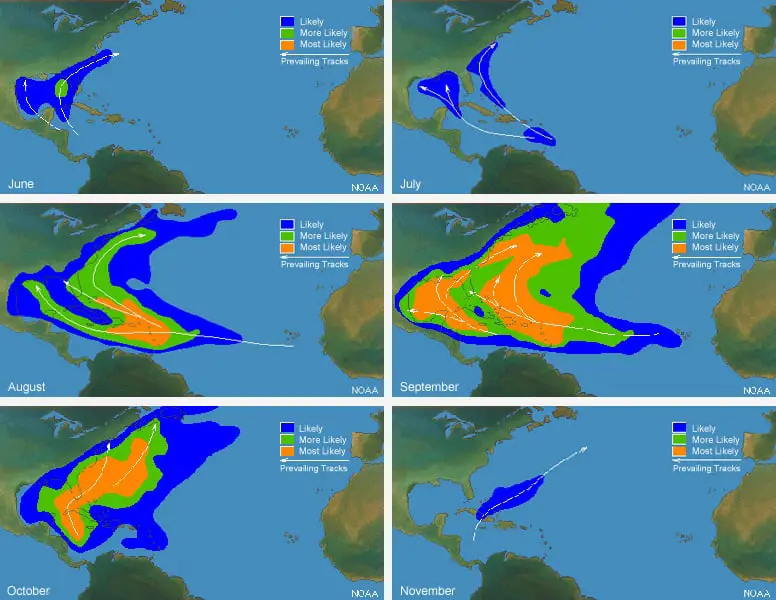
Do I Have Time to Prepare?
Concerned tourists can keep in touch with the latest information by tuning in to our Facebook community or following us on Twitter where regular updates will be broadcasted in the event of an approaching tropical system. You can also come back to this page where a warning box at the top will be kept up-to-speed with the latest information on tropical threats. Keep in mind that storms take days and weeks to form usually giving forecasters ample time to keep locals and tourists informed.
Hurricanes that affect the Dominican Republic tend to form along the west coast of Africa starting out as tropical depressions and tropical storms. Forecasters keep an eye on the storms for as many as two or three weeks before a hurricane threat is even a possibility. By and large, hurricanes will not sneak upon unsuspecting travelers; there is plenty of opportunity to be warned.
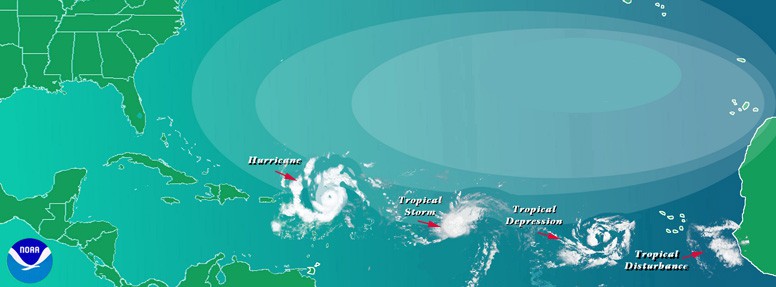
Will it Ruin My Vacation?
If you happen to be in the Dominican Republic on the off chance a hurricane hits the area, the most a you may experience is a move to another hotel if the one you are at is somehow affected (they may even move you to another coast if the area has been widely effected for you to enjoy the rest of your vacation).
All around clean-up activities are likely to be in full swing after the storm has passed, but this should cause little interruption to your plans. Flights may be delayed and your stay in the Dominican Republic may be extended, but the cost of those extra vacation days will be picked up by the hotel management.
Hurricanes are a concern with any excursion to a tropical area, but the chance of being caught in one in the Dominican Republic is rare. You are more likely to forgo your concerns over the slim chance of being caught in a hurricane once you are exposed to the tropical beauty and rich culture awaiting you in the Dominican Republic.
European, African, and native Taino Indian tribe influences combine with Spanish roots to create a mix of modern and ancient culture. You will find yourself immersed in the culture through music, art, sports, and cuisine. A thousand miles of tropical Caribbean beaches await, along with mountains and the tiny country’s other district geographical features.
Other Graphics
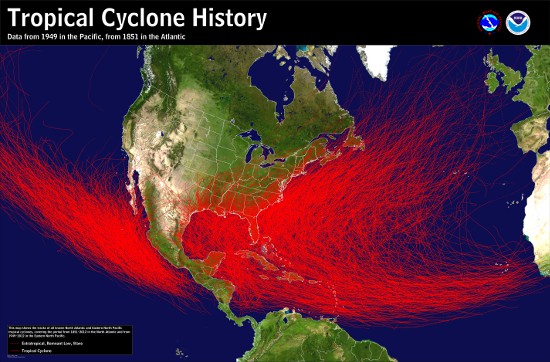
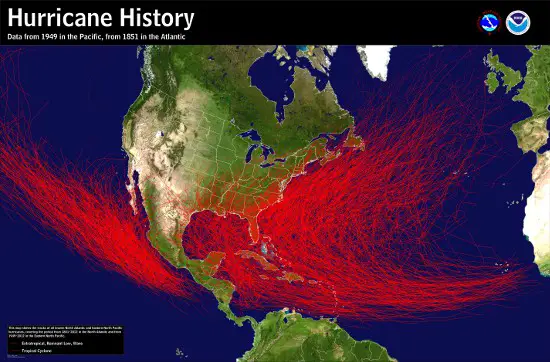
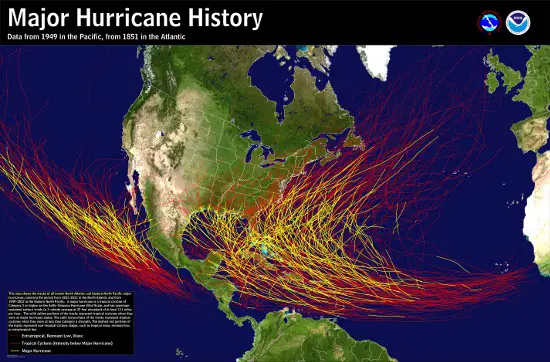
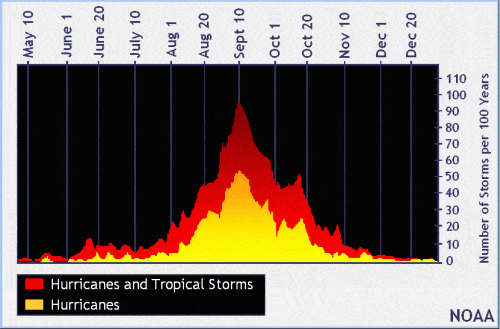
Useful Links
Hurricane Tracking – Wunderground
Hurricane Tracking – Weather Channel
Hurricane Tracking – National Hurricane Center (Miami)
Weather Blog & Forum – Wunderground
Local Weather Service – ONAMET
[gap height=”15px”]
[ssboost]

